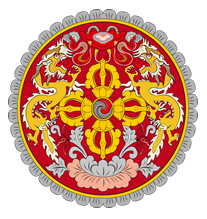Bhutan: Government
Key Figures
- Chief of State:
- King Jigme Khesar Namgyel Wangchuck
- Head of Government:
- Prime Minister Tshering Tobgay
Overview
- Government Name:
- Kingdom of Bhutan
- Constitution:
- Adopted: 2008; Based upon Buddhist philosophy and various other aspects, the Constitution of Bhutan aims to promote and protest the present and future well-being of the people of Bhutan. It details the structure of the political system so that it provides peace and stability while also strengthening Bhutan's security.
- Government Type:
- Constitutional Monarchy

Index of Economic Freedom
Country Risk Rating
Government Branches
| Main Powers | Election Process | Election Cycle 1 | |
|---|---|---|---|
| Executive | The prime minister is the head of the government and heads the executive cabinet, also know as the council of ministers, who controls the executive powers. |
The role of king is hereditary, and he must retire by age 65. The prime minister is nominated by the party that wins the most seats in the national assembly. The King may be removed by a two-thirds vote by Parliament. |
5 years |
| Judicial | The high court is the first court of appeal, and the supreme court is the final appeal. The supreme court has the original jurisdiction over constitutional questions and matters of national importance. |
Supreme and high court judges are appointed by the king. |
The Chief Justices serve a 5-year term or until reaching age 65. The 4 other judges serve 10 year terms or until age 65. |
| Legislative | The Bhutanese parliament is bicameral, consisting of the national council and a national assembly. |
Bhutan elects its legislative branch through universal suffrage. |
5 years |
Regional Trade Blocs
International Organization Participation [2]
Environmental Agreements [3]
Tax Information [2]
- Tax Authority:
- Information not available
- Tax Name:
- Information not available
Sources:
- ElectionGuide http://www.electionguide.org/
- EY, http://www.ey.com
- CIA World Factbook, https://www.cia.gov/the-world-factbook/
- U.S. Bilateral Relations Fact Sheets http://www.state.gov/r/pa/ei/bgn/


